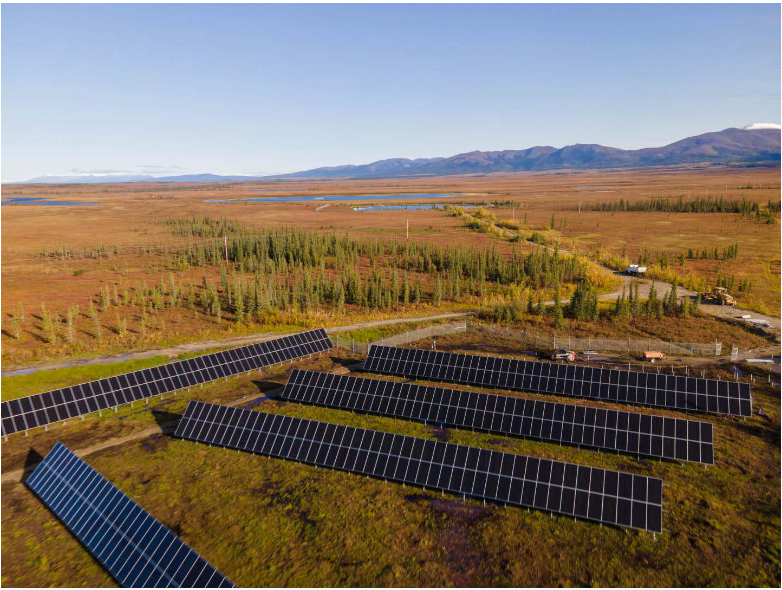Scientists from the US National Renewable Energy Laboratory (NREL) and the Renewable Energy Alaska Project have compiled five case studies for solar, wind, hydropower, and biomass deployment in communities across the Arctic region of Alaska.
In one of the case studies, the communities of Shungnak and Kobuk deployed a solar-plus-storage system coupled with electrical heat pumps for households. The communities have a combined population of 361 people, according to the 2020 Census Reporter.
The solar-battery system was deployed to replace diesel generators, and the heat pumps to increase building energy efficiency and reduce the use of diesel-fueled furnaces. The initiative was launched when a change in the local river levels prevented barges from delivering diesel.
The communities acted as an independent power producer (IPP). The Northwest Arctic Borough (NWAB) developed the project and provided $800,000 in funding, topped with $1.3 million from the US Department of Agriculture. The Alaska Village Electric Cooperative (AVEC) performed an energy audit on 80 households in Shungnak and Kobuk to access the benefit of heat pumps, adding a cost of about $1.02 million. The two communities signed a power purchase agreement with AVEC and NWAB to complete the project.
The system consists of a 223.5 kW PV array on two strings with a 100 kW inverter each, coupled with a 352 kWh battery and a 250 kW inverter supplied by California-based Box Power. It uses bifacial modules from an undisclosed manufacturer, with no tracking, and an 11% capacity factor.
“The arrays are pointed in different directions to better distributed their power generation throughout long Arctic summer days,” the researchers said.
The system uses microcontrollers to turn off diesel generators when they drop to 30% load during the summer. The study did not provide any technical details about the heat pumps.
Results show that the PV system produces 200 MWh of electricity per year, offsetting 14,300 gallons of diesel. The battery can power Shungnak and Kobuk “for a few hours,” the report says. The communities expect households to save between $2,000 to $2,500 a year each by replacing diesel furnaces with heat pumps. The renewables system provides an estimated 11% to 15% of their electricity mix.
“No pushback was received from community members, and the NWAB is waiting to see how members respond to the project before moving forward,” the report says.
In order to displace more diesel, the IPP plans to upgrade the inverter to 500 kW to meet a winter peak load of 300 kW and add a 100 kW wind turbine to the system. The communities are also looking for funding to install more household heat pumps.
“These pumps make more sense when building a new house and less when removing existing equipment and replacing it,” the report said.
The study concluded that good relationships with suppliers, consultants, and contractors were essential to the success of the project. In particular, the close involvement of the local tribe, the Native Village of Shungnak, simplified land and equipment ownership.
The report also includes the results of a survey on the needs and challenges identified by Arctic communities that don't have renewable energy projects.
This content is protected by copyright and may not be reused. If you want to cooperate with us and would like to reuse some of our content, please contact: editors@pv-magazine.com.



10 comments
By submitting this form you agree to pv magazine using your data for the purposes of publishing your comment.
Your personal data will only be disclosed or otherwise transmitted to third parties for the purposes of spam filtering or if this is necessary for technical maintenance of the website. Any other transfer to third parties will not take place unless this is justified on the basis of applicable data protection regulations or if pv magazine is legally obliged to do so.
You may revoke this consent at any time with effect for the future, in which case your personal data will be deleted immediately. Otherwise, your data will be deleted if pv magazine has processed your request or the purpose of data storage is fulfilled.
Further information on data privacy can be found in our Data Protection Policy.